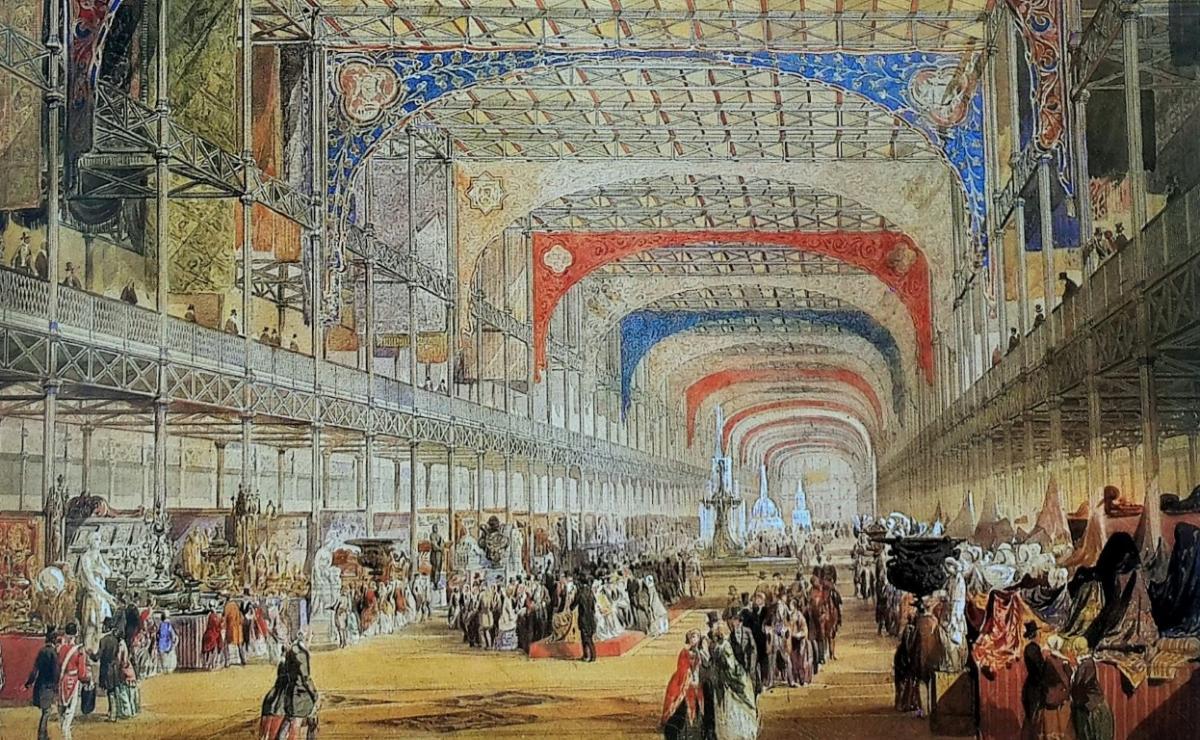Imagine a palace that shimmers like a giant gem in the sunlight—a structure where light and transparency dance together in perfect harmony. Whether you’re a visionary architect dreaming of an awe‐inspiring modern landmark or a storyteller crafting a fantastical realm, this guide will walk you through the key steps to conceptualize, design, and (virtually) build your crystalline palace.
1. Concept and Inspiration
The first step in crafting your crystalline palace is to envision its essence. Look to history for inspiration. Joseph Paxton’s design for London’s historic Crystal Palace was revolutionary in its use of glass and iron, demonstrating how modular construction and transparency could create a structure that was both light and grand. Like the Crystal Palace, your design can celebrate modern technology and materials by embracing simplicity, modularity, and a bold interplay of light.
Ask yourself:
-
What emotions should your palace evoke? (Wonder, serenity, futuristic elegance?)
-
How can transparency and reflective surfaces enhance both interior and exterior spaces?
-
In what ways might your structure interact with nature—perhaps integrating gardens, water features, or natural light?
Allow these questions to inform your creative vision. Sketch out rough ideas, create mood boards with prismatic imagery and architectural sketches, and note key themes such as modularity, light, and organic geometry.
2. Design Considerations: Geometry and Layout
A crystalline palace is defined by its clarity and fluid form. Begin by developing a modular design—one that echoes the efficiency of historical prefabricated systems while allowing for creative freedom. For example, Paxton’s original design was based on a simple modular grid, with dimensions dictated by the size of available glass panes.
Key tips:
-
Modularity: Divide your structure into uniform modules (for instance, squares or hexagons). This not only simplifies construction but also creates a rhythmic visual pattern.
-
Curved Elements: Incorporate gentle curves, arches, or vaulted ceilings that mimic the natural forms of crystals and organic structures. Think of how light refracts through a prism to create a spectrum.
-
Open Spaces: Design vast open galleries or atria that allow natural light to flood interior spaces. Transparency should create a seamless dialogue between the palace’s interior and its external environment.
Experiment with digital design tools to model these geometric ideas. Parametric design software can help you iterate quickly and optimize your design for both aesthetics and structural performance.
3. Material Selection: The Building Blocks of Brilliance
The “crystalline” quality of your palace relies heavily on the materials you choose. Today’s advanced materials offer many exciting possibilities to emulate the luminous qualities of crystal:
-
Glass and Transparent Composites: High-performance glass, laminated safety glass, or even advanced acrylics can create walls that sparkle and transmit natural light. These materials are the modern counterparts of the cast glass panels that once defined the Crystal Palace.
-
Metallic Frameworks: Use sleek, high-strength steel or aluminum to frame your structure. Consider finishes like polished chrome or brushed metal that catch and reflect light.
-
Integrated LED Lighting: For night-time enchantment, incorporate LED strips or fiber optics within the glazing. These lights can change color to create dynamic, ever-shifting visual effects, reminiscent of a living, breathing crystal.
-
Sustainable Alternatives: Explore materials with high recycled content or innovative composites that mimic natural crystals. Sustainability not only reduces environmental impact but can add a story of modern ingenuity to your design.
By blending these materials, your crystalline palace will achieve a balance of transparency, durability, and stunning visual appeal.
4. Structural Engineering: Building for Beauty and Strength
While your design may be inspired by ethereal qualities, the structure must be sound. Learn from the historical innovations of the Crystal Palace, which was built using standardized, prefabricated components that allowed rapid assembly.
Steps to ensure structural integrity:
-
Prefabrication and Standardization: Design components that can be mass-produced with tight tolerances. Standardized nuts and bolts, as first successfully deployed in the Crystal Palace, are essential for fast, reliable assembly.
-
Modular Assembly: Create a framework that supports both vertical and horizontal expansion. Use digital simulations to model load distributions and ensure each module contributes to the overall stability.
-
Integration of Flexibility: Incorporate design elements that can adjust to thermal expansion, wind loads, and other dynamic forces. Consider using resilient connections and flexible joints that mirror the delicate yet strong interlocking of crystal facets.
-
Energy Efficiency and Environmental Control: Transparent buildings can have challenges with heat gain and loss. Integrate shading devices, low-emissivity coatings on the glass, and natural ventilation strategies to maintain comfortable interior climates.
Consult with structural engineers early in the process to validate your concepts and use modern software tools to simulate real-world stresses and environmental conditions.
5. Construction Process: Bringing the Vision to Life
The construction phase is where your design transitions from concept to reality. Here’s how to ensure an efficient build:
-
Detailed Planning: Develop a comprehensive project plan with timelines, resource allocation, and risk management strategies. Prefabrication means that many components are manufactured off-site, so coordinating logistics is vital.
-
On-Site Assembly: Use modular techniques to assemble the structure quickly. Like the Victorian builders of the Crystal Palace, plan to assemble self-supporting modules in sequence, reducing the need for extensive temporary supports.
-
Quality Control: Implement rigorous quality checks during the prefabrication and assembly processes. Standardized components should be inspected for consistency and fit.
-
Innovative Techniques: Consider modern techniques like robotic assembly or 3D printing for intricate detailing. These methods can replicate the delicate, crystalline quality of your design while ensuring precision.
By using a well-coordinated approach, you can construct your crystalline palace in a manner that is both efficient and true to your visionary design.
6. Finishing Touches: Lighting, Landscaping, and Interior Design
The final details will transform your palace into an immersive experience:
-
Lighting: Both natural and artificial lighting are crucial. Use daylight to highlight the reflective properties of your materials, and install ambient lighting to enhance the ethereal quality after sunset. Consider programmable lighting systems that allow for dynamic changes in color and intensity.
-
Landscaping: Integrate the palace into its surroundings with thoughtful landscaping. Reflecting pools, crystal-like sculptures, and carefully curated gardens can create a dialogue between the built environment and nature.
-
Interior Design: Inside, continue the theme of clarity and light. Minimalist décor, reflective surfaces, and strategically placed mirrors can amplify the sense of openness. Choose furnishings that complement the palace’s futuristic aesthetic while providing comfort and functionality.
7. Embracing Innovation and Tradition
Crafting a crystalline palace is about marrying the timeless elegance of classical design with modern innovations. Drawing on historical examples like the Crystal Palace can offer invaluable lessons on modular design, prefabrication, and the interplay of materials. Yet, your creation should push boundaries—celebrating transparency, light, and the wonder of modern materials while paying homage to the craftsmanship of the past.
In a world that values sustainability and rapid innovation, your crystalline palace can serve as a beacon of progress—a structure that not only dazzles the eye but also embodies efficient, thoughtful design.
Conclusion
From concept to construction, crafting a stunning crystalline palace requires a blend of creative vision, precise engineering, and innovative material use. By taking inspiration from historical marvels such as Joseph Paxton’s Crystal Palace and applying modern technology and sustainable practices, you can create a palace that captivates and inspires. Embrace modular design, standardize your components for efficiency, and finish with careful attention to lighting and interior details. Whether for a real project or as a creative exploration, the process of designing your crystalline palace will be as brilliant and multifaceted as the structure itself.
Now, let your imagination shine—and may your crystalline palace become a radiant symbol of innovation and beauty.




